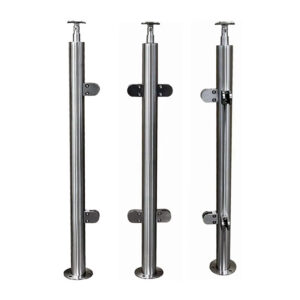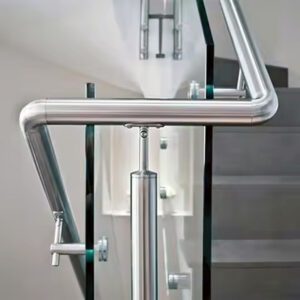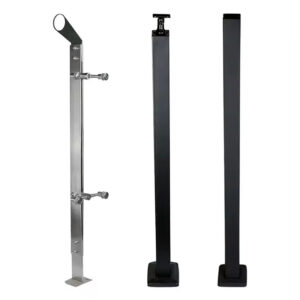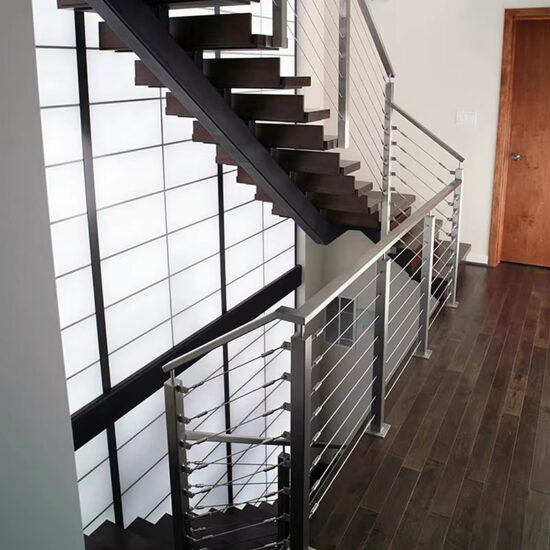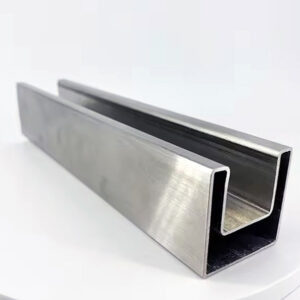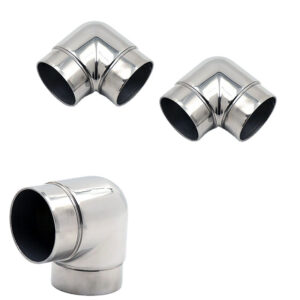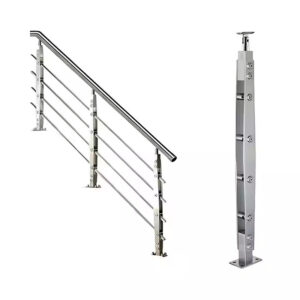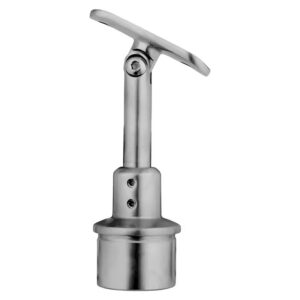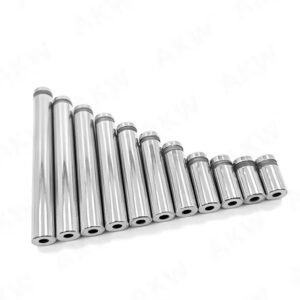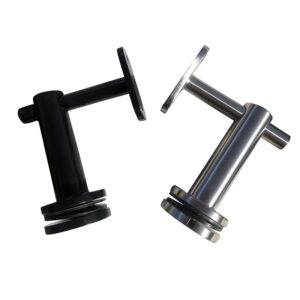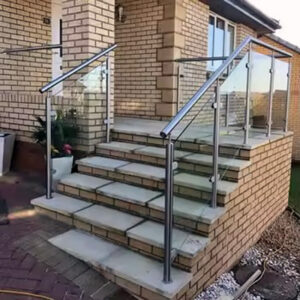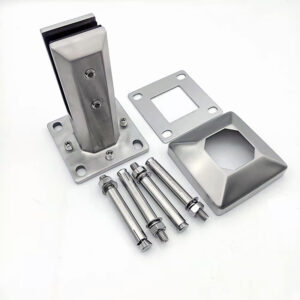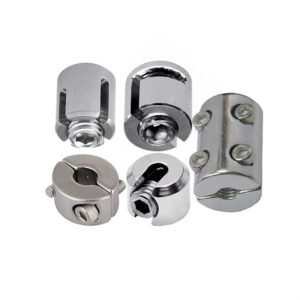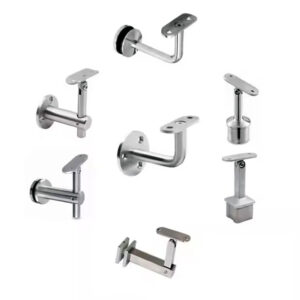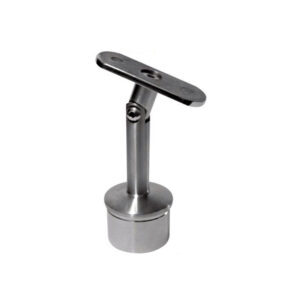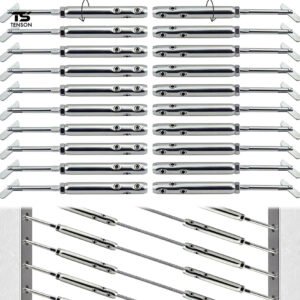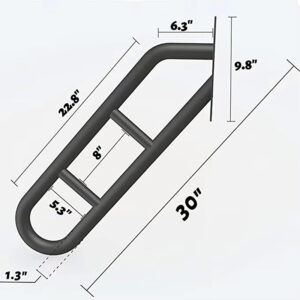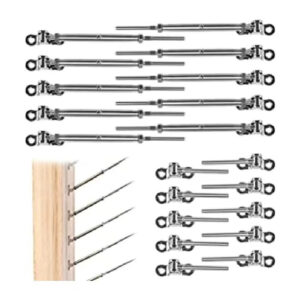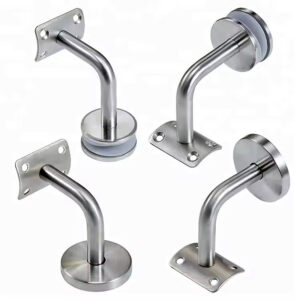Finding chemical anchor systems that deliver reliable performance without installation headaches shouldn’t be this complicated. After 23 years in the stainless steel hardware business, we’ve seen contractors struggle with anchor failures, code compliance issues, and systems that promise easy installation but create field problems. The solution isn’t more complex engineering—it’s proven chemical anchor systems designed for real-world railing and handrail applications. Esang Metal focuses on manufacturing anchor systems that work consistently across residential, commercial, and marine environments.
Chemical Anchor Systems for Railing Applications
Chemical anchor systems provide the structural foundation for handrail and railing installations where mechanical fasteners can’t deliver adequate holding power. These systems use high-strength adhesive compounds to create permanent bonds between stainless steel hardware and concrete, masonry, or steel substrates.
Stainless Steel Chemical Anchor Components
Our chemical anchor fabrication 316L capabilities cover threaded rods, studs, and custom anchor configurations specifically designed for railing post mounting. The 316L grade provides superior corrosion resistance for marine and coastal installations, while 304 stainless works effectively for most commercial and residential applications.
Standard anchor configurations include:
- M8 through M20 threaded studs for post base connections
- Custom-length rods for through-substrate installations
- Bent anchor configurations for offset mounting requirements
- Surface-mount anchors for retrofit applications
The precision chemical hardware manufacturing process ensures consistent thread quality and dimensional accuracy. This eliminates field fitting problems that waste installation time and compromise structural integrity.
Chemical Anchor Installation Systems
Complete chemical anchor systems include the adhesive compounds, mixing equipment, and installation hardware needed for reliable field installation. Working with experienced installers, we’ve identified the most effective combinations for different substrate conditions.
Two-component epoxy systems provide the highest strength values and work in temperature ranges from -40°F to 180°F. These systems typically cure in 24-72 hours depending on ambient conditions and provide full load capacity within one week.
Polyester resin systems offer faster cure times (1-4 hours) with slightly lower ultimate strength values. These work well for standard commercial installations where quick turnaround matters more than maximum holding power.
Vinyl ester systems bridge the gap between epoxy and polyester performance, offering chemical resistance for industrial environments while maintaining reasonable cure times.
Technical Performance Data
| Anchor Size | Ultimate Tensile (lbs) | Shear Capacity (lbs) | Minimum Edge Distance | Cure Time (Hours) |
|---|---|---|---|---|
| M8 x 80mm | 3,500 | 2,800 | 3 inches | 4-6 |
| M10 x 100mm | 5,200 | 4,100 | 4 inches | 4-6 |
| M12 x 120mm | 7,800 | 6,200 | 5 inches | 6-8 |
| M16 x 150mm | 12,400 | 9,900 | 6 inches | 6-8 |
| M20 x 180mm | 18,200 | 14,500 | 8 inches | 8-12 |
Load values assume 3,000 PSI concrete with proper installation procedures. Actual capacity varies with substrate condition, temperature, and installation quality.
Material Selection Guidelines
304 Stainless Steel handles most commercial chemical anchor systems applications with good corrosion resistance and cost-effectiveness. Use for indoor installations, standard outdoor exposures, and non-marine environments.
316L Stainless Steel provides superior corrosion resistance for marine grade chemical anchors ODM applications. The lower carbon content prevents carbide precipitation during welding operations, maintaining corrosion resistance at weld joints.
Real-World Applications and Results
Commercial Building Projects
A recent 15-story office complex in Seattle required 340 railing posts anchored to concrete floor slabs. Using our modular chemical anchor systems, the installation team completed the anchoring work 30% faster than originally scheduled. The combination of pre-sized anchor studs and compatible adhesive systems eliminated field modifications and reduced material waste.
“Standardized chemical anchor components cut field installation time significantly while providing consistent structural performance.” —Pacific Northwest Contractors Association
Marine Environment Installations
Coastal boardwalk projects present unique challenges for chemical anchor systems. Salt spray, temperature cycling, and high humidity accelerate corrosion of standard hardware. Our 316L stainless chemical anchors have provided 15+ years of service life on Pacific Coast installations without structural degradation.
The key factors for marine grade chemical anchors ODM success include proper surface preparation, temperature-controlled cure cycles, and post-installation protection during the critical first 48 hours.
Industrial Facility Applications
Manufacturing plants require chemical anchor systems that maintain holding power under vibration, temperature variation, and chemical exposure. Recent installations in pharmaceutical manufacturing facilities have used epoxy-based anchor systems with 316L studs to meet FDA cleanliness requirements while providing structural reliability.
A 200,000 square foot distribution center project integrated our anchor systems with modular railing components to create OSHA-compliant fall protection. The installation team completed 1,200 linear feet of railing in 8 days, compared to 12-day estimates for traditional anchor methods.
Installation Support and Quality Control
Field Installation Best Practices
Chemical anchor installation requires attention to detail that mechanical fasteners don’t. Our installation protocols address the common problems that create anchor failures:
Hole preparation: Drill diameter tolerances within ±0.5mm prevent resin blowout or inadequate bond area. Standard masonry bits work for most concrete applications, but diamond core bits provide cleaner holes in high-strength concrete.
Cleaning procedures: Compressed air and wire brushes remove concrete dust and debris that reduces bond strength. The hole cleaning step typically takes 2-3 minutes per anchor but prevents 90% of field failures.
Mixing and injection: Proper resin mixing ensures uniform cure and full strength development. Static mixing tubes provide consistent results but require replacement every 8-10 anchors to maintain quality.
Quality Assurance Testing
Our precision chemical hardware undergoes dimensional inspection, tensile testing, and corrosion resistance verification before shipping. This manufacturing quality control reduces field rejection rates to less than 1% compared to industry averages of 3-5%.
Installation Timeline and Cost Factors
| Project Size | Setup Time | Installation Rate | Cure Waiting Period | Total Timeline |
|---|---|---|---|---|
| 1-10 anchors | 30 minutes | 8 minutes/anchor | 4-6 hours | Same day |
| 11-50 anchors | 45 minutes | 6 minutes/anchor | 4-6 hours | 1-2 days |
| 51-200 anchors | 1 hour | 5 minutes/anchor | 6-8 hours | 2-4 days |
| 200+ anchors | 1.5 hours | 4 minutes/anchor | 8-12 hours | 1-2 weeks |
Installation rates assume experienced crews with proper equipment. First-time installations typically require 25-30% additional time for setup and procedure familiarization.
Custom Chemical Anchor Manufacturing Capabilities
Standard catalog anchors handle most railing installations, but complex projects often require custom configurations. Our custom chemical anchor manufacturing capabilities include bent anchors for offset mounting, extended-length studs for thick substrates, and special thread configurations for proprietary railing systems.
Recent custom projects have included:
- 45-degree bent anchors for sloped mounting surfaces
- Extra-long studs for mounting through waterproof membranes
- Metric-to-inch thread adapters for international railing systems
- Corrosion-resistant coatings for extreme chemical exposure
Lead times for custom anchors typically run 3-4 weeks depending on complexity and order quantity.
Frequently Asked Questions
How do chemical anchors compare to mechanical anchors for railing posts?
Chemical anchors provide higher ultimate strength in concrete and masonry substrates, particularly in cracked or lower-strength concrete. They distribute loads over a larger area, reducing stress concentrations. However, they require cure time before loading and don’t work well in wet or contaminated holes.
What’s the shelf life of chemical anchor adhesives?
Epoxy systems typically last 18-24 months when stored at room temperature. Polyester resins have 12-18 month shelf life. Temperature extremes reduce shelf life significantly—avoid storage above 85°F or below 40°F.
Can chemical anchors be removed or relocated?
Chemical anchors create permanent bonds that can’t be easily removed. Planning anchor locations carefully prevents expensive retrofitting. Some epoxy systems can be heated and extracted, but this usually damages the substrate.
What substrate conditions prevent reliable chemical anchor installation?
Wet concrete, temperatures below 40°F, contaminated holes, and substrates with active cracks reduce anchor reliability. Most chemical systems require dry conditions and minimum 3,000 PSI concrete strength for rated capacity.
How do you verify chemical anchor installation quality?
Pull testing provides the most reliable verification, but it’s destructive. Non-destructive methods include visual inspection of resin squeeze-out, anchor seating depth measurement, and cure time verification. Proper installation procedures prevent most problems.
Competitive Advantages and Selection Criteria
Twenty-three years of manufacturing experience has taught us that successful chemical anchor systems require more than high-strength adhesives and quality hardware. System reliability depends on component compatibility, consistent manufacturing quality, and practical installation procedures.
Our approach focuses on proven combinations rather than cutting-edge chemistry. Standard epoxy and polyester systems provide predictable performance when paired with properly manufactured stainless steel anchors. This conservative approach reduces field surprises and provides consistent results across different project conditions.
Selection Criteria for Different Applications
Budget-focused projects: 304 stainless anchors with polyester resin systems provide adequate performance at lowest cost. Best for indoor commercial applications with standard environmental conditions.
Performance-critical installations: 316L anchors with two-component epoxy systems deliver maximum reliability for high-load or corrosive environments. Higher initial cost offset by extended service life and minimal maintenance.
Fast-track schedules: Polyester systems with 1-4 hour cure times allow same-day loading in many applications. Slightly lower ultimate capacity acceptable for most standard railing loads.
The key to successful chemical anchor system selection is matching performance requirements with realistic project constraints rather than over-specifying for conditions that don’t exist.
